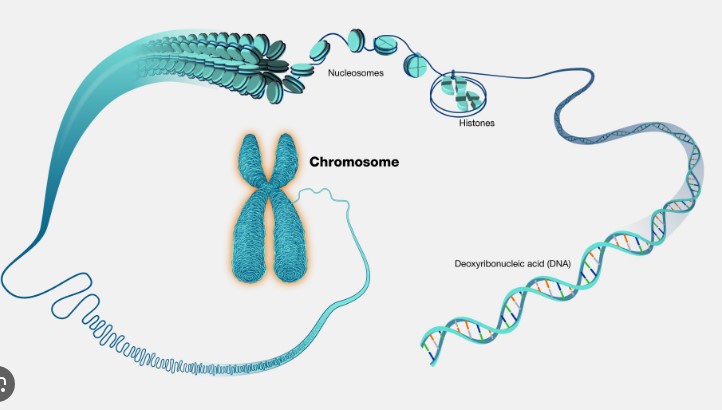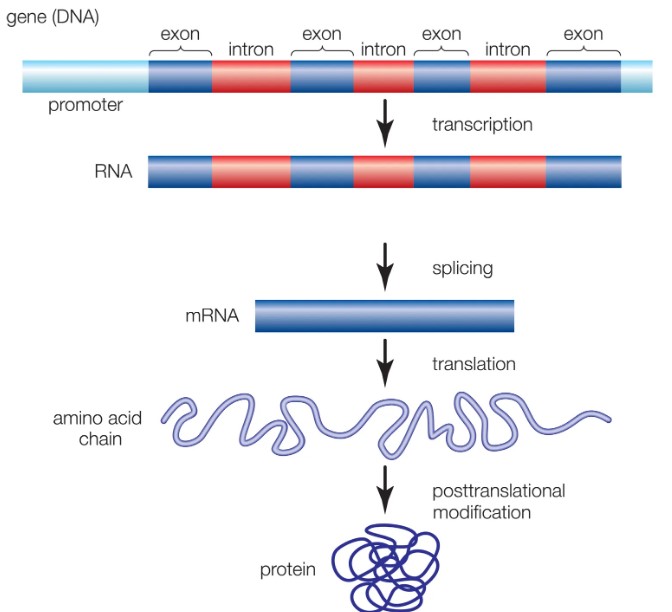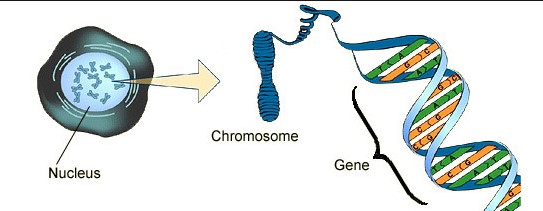Genetics is a fundamental aspect of biology that impacts everything from the color of our eyes to our susceptibility to certain diseases. It operates through the complex interplay of chromosomes, DNA, and genes, each of which plays a crucial role in the inheritance and expression of traits. This intricate relationship forms the basis of our genetic makeup, influencing not just individual characteristics but also how we understand the biological world.
Chromosomes are long strands of DNA wrapped around proteins, found in the cell nucleus. DNA, or deoxyribonucleic acid, is the molecule that carries the genetic instructions used in the growth, development, functioning, and reproduction of all known living organisms and many viruses. Genes are segments of DNA located on chromosomes that dictate specific traits by coding for proteins. Together, these components encode the instructions for life, dictating everything from our physical appearance to our health.
The dynamics between chromosomes, DNA, and genes are essential for the replication of cells, the synthesis of proteins, and the inheritance of traits from parents to offspring. Understanding their function and relationship helps unravel the complexities of genetics, shedding light on how traits are passed down and how genetic disorders arise. This knowledge is not only fascinating but also crucial for advancements in medicine, biotechnology, and our understanding of life itself.

Chromosome Basics
What Are Chromosomes?
Chromosomes are long strands of DNA wound around proteins called histones, present in the nucleus of almost every cell in an organism’s body. These structures carry the genetic information necessary for the development, functioning, and reproduction of organisms. Chromosomes appear as thread-like structures during cell division, where they are most easily visualized under a microscope.
Chromosome Structure
The structure of a chromosome is pivotal to its function in genetic information storage and transfer. A single chromosome consists of two identical halves known as sister chromatids, held together at a region called the centromere. This design is crucial for the equal distribution of genetic information during cell division.
Chromatids and Centromeres
- Chromatids are identical strands of DNA, making up the two halves of a chromosome.
- The centromere is the point where chromatids are joined, essential for movement of chromosomes during cell division.
Types of Chromosomes
Chromosomes are broadly classified into autosomes and sex chromosomes. Autosomes determine body traits and characteristics, while sex chromosomes, denoted as X and Y in humans, determine the biological sex of an individual.
- Autosomes: Non-sex chromosomes that carry genes affecting the organism’s overall makeup except for sex determination.
- Sex Chromosomes: Specifically involved in determining the sex of an organism, with variations like XX for females and XY for males in humans.
DNA Unveiled
DNA Definition
DNA, or deoxyribonucleic acid, is the hereditary material in humans and almost all other organisms. Nearly every cell in a person’s body has the same DNA. It carries the instructions necessary for the development, functioning, growth, and reproduction of all known living organisms and many viruses.
DNA Structure
The structure of DNA is famously known as the double helix, discovered by Watson and Crick. This structure consists of two strands that wind around each other, like a twisted ladder. Each strand is made of nucleotides, which are the basic units of DNA, consisting of a sugar, a phosphate, and a base.
Double Helix and Nucleotides
- The double helix resembles a twisted ladder, where the base pairs form the ladder’s rungs and the sugar and phosphate molecules form the vertical sidepieces.
- Nucleotides are the building blocks of DNA, each composed of a base (adenine, thymine, cytosine, or guanine), a sugar molecule, and a phosphate molecule.
DNA Replication
DNA replication is a critical process that occurs before a cell divides, ensuring that each new cell receives an exact copy of the DNA. This process involves:
- Unwinding of the double helix.
- Separation of the two strands by breaking the hydrogen bonds between the bases.
- Each strand serves as a template for the formation of a new complementary strand.
This ensures genetic continuity from one generation to the next, playing a crucial role in growth and repair.
Genes Explained
Gene Basics
Genes are segments of DNA located on chromosomes that contain the instructions for producing proteins, the building blocks of our bodies. These instructions are responsible for an individual’s inherited traits, ranging from physical appearance to susceptibility to certain diseases.
Gene Structure
The structure of a gene includes exons and introns. Exons are the coding regions that dictate protein synthesis, while introns are non-coding regions that get removed during RNA processing.
Exons and Introns
- Exons: The parts of a gene that are expressed in the protein.
- Introns: These sections are transcribed into RNA but are removed before translation into protein.
Gene Expression
Gene expression is the process by which the information from a gene is used in the synthesis of a functional gene product, typically a protein. This process involves two main steps:
- Transcription: The DNA sequence of a gene is copied into mRNA.
- Translation: The mRNA is used as a template to build a protein.
This mechanism ensures that genes exert their effects on the phenotype, or physical appearance, of an organism, influencing everything from eye color to enzyme function.

Linking Chromosomes, DNA, and Genes
From DNA to Chromosome
The journey from DNA to chromosome is a fascinating process of organization within the cell nucleus. DNA molecules are extremely long, yet they compactly fit into the nucleus of a cell thanks to a series of clever folding and coiling mechanisms. This compactness is achieved by wrapping the DNA around proteins called histones, forming a structure known as a nucleosome. These nucleosomes further coil and fold into the structures we recognize as chromosomes. This organization is not just about saving space; it’s crucial for the efficient management of gene expression and DNA replication.
Gene Location
The exact location of genes on chromosomes, termed loci, is a key factor in understanding how traits are inherited. Each gene occupies a specific place on a chromosome, making it possible to map the genome of an organism. This mapping is critical for identifying the genes associated with specific diseases or traits. The significance of gene location goes beyond mere mapping; it plays a crucial role in the regulation of gene expression, as the gene’s context within the chromosome can affect its activity.
Genetic Variation
Genetic variation is the spice of life, providing the raw material for evolution and species diversity. Chromosomes and DNA are central to this variation, through mechanisms like:
- Mutation: Changes in the DNA sequence that can introduce new traits.
- Recombination: During meiosis, chromosomes can exchange segments, shuffling genes and producing unique combinations.
These variations are critical for adaptation and survival, allowing populations to adjust to new environments and challenges.
Practical Implications
Genetic Disorders
Abnormalities in chromosomes, DNA, or genes can lead to a wide range of genetic disorders. These can be as simple as a single-gene mutation causing diseases like cystic fibrosis, or as complex as the misalignment of entire chromosomes, such as in Down syndrome. Understanding the genetic basis of these disorders is crucial for diagnosis, treatment, and prevention, highlighting the importance of genetics in healthcare.
Genetic Testing
Genetic testing has revolutionized medical diagnostics, allowing for the early detection of genetic disorders, the assessment of disease risk, and personalized medicine. By analyzing a person’s chromosomes and genes, doctors can tailor treatments to the individual’s genetic profile, improving outcomes and reducing side effects. This field relies heavily on understanding the intricate relationships between chromosomes, DNA, and genes.
Advances in Genetics
Recent advances in genetics have been breathtaking, largely due to technologies like CRISPR-Cas9, which allows for precise editing of the DNA sequence. This and other techniques have opened new avenues for research and treatment, from curing previously untreatable genetic diseases to enhancing crop resilience in agriculture. The exploration of the human genome continues to unveil the complexity and beauty of life at the molecular level.
Ethical Considerations
Privacy and Genetic Information
The rise of genetic testing brings forth significant privacy concerns. Genetic information is deeply personal, revealing not just individual health risks but potentially sensitive traits. Ensuring the privacy and security of this information is a major ethical challenge, requiring stringent regulations to protect individuals from discrimination and breaches of confidentiality.
Genetic Modification
The power to modify genes also raises profound ethical questions. Genetic engineering holds the promise of eliminating genetic diseases and improving quality of life, but it also poses risks of unintended consequences and raises concerns about “designer babies.” The debate around these issues is ongoing, emphasizing the need for ethical guidelines to govern the use of genetic technologies.
Frequently Asked Questions
What is a Chromosome?
A chromosome is a long, thread-like structure made of protein and a single molecule of DNA, passed from parents to offspring. It carries genetic information in the form of genes and plays a vital role in determining the traits and characteristics of an organism.
How Does DNA Function?
DNA contains the instructions needed for an organism to develop, survive, and reproduce. It does this by coding for proteins, which are the building blocks of the body and catalysts for chemical reactions, thereby determining much of an organism’s physical traits and behaviors.
What are Genes?
Genes are segments of DNA located on chromosomes that code for proteins. Each gene has a specific function and can influence traits such as eye color, risk of diseases, and more. They act as instructions to make molecules called proteins, essential for the body’s functioning and development.
How Do Genetics Influence Health?
Genetics can significantly influence an individual’s health by predisposing them to certain diseases, like diabetes, cancer, and heart conditions. Understanding one’s genetic makeup can provide insights into disease risk and inform personalized prevention strategies and treatments.
Conclusion
The intricate relationship between chromosomes, DNA, and genes serves as the foundation for the field of genetics, offering insights into how life is coded and the mechanisms behind inheritance and trait expression. This knowledge not only enhances our understanding of biology but also paves the way for medical advancements, enabling targeted treatments and personalized medicine.
By demystifying the roles of chromosomes, DNA, and genes, we gain a deeper appreciation for the complexity of life and the processes that govern it. As research in genetics continues to evolve, the potential for new discoveries promises to further revolutionize our approach to health, disease, and understanding the biological intricacies of living organisms.

